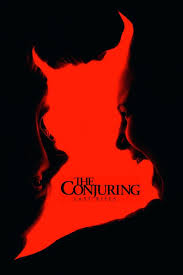Understanding Conjuring Last Rites in Culture and Media

Introduction to Last Rites
The concept of Last Rites extends beyond mere religious practice; it embodies the multifaceted relationship between death, belief, and the human experience. This sacred ritual, prevalent in various faiths, signifies the final preparation before death, providing comfort to the dying and their loved ones. Recently, cultural portrayals in films like ‘The Conjuring’ series have sparked broader discussions on the implications and interpretations of such rituals in contemporary storytelling, intertwining elements of horror and spirituality.
Significance of Last Rites in Different Cultures
Last Rites, or Anointing of the Sick in Christianity, is a sacramental rite meant to confer grace and peace to the dying. While predominantly recognized in the Catholic tradition, similar rituals exist in many cultures and religions. For instance, in Hinduism, the concept of ‘Antyesti’ involves specific rites performed for the deceased, which symbolize the journey of the soul to the afterlife. Each tradition reflects the community’s understanding of life, death, and what lies beyond, ultimately aiming to ensure a peaceful transition.
The ‘Conjuring’ Influence
The portrayal of Last Rites in the ‘Conjuring’ film franchise adds a layer of intrigue, often depicting the ritual as a means to confront supernatural threats. In ‘The Conjuring 3: The Devil Made Me Do It’, the theme of possession and exorcism is explored, bringing Last Rites into the narrative as a tool of salvation. Such portrayals, while dramatized for cinematic effect, raise questions about the authenticity of spiritual practices and their appropriateness in horror genres, challenging viewers to consider the impact of cultural representation in film.
Conclusion: The Cultural Impact and Future Outlook
As society becomes increasingly fascinated with death and the afterlife, the significance of rituals like Last Rites continues to evolve. They serve not only as spiritual practices but also as cultural commentaries that provoke thought and discussion. The intersection between folklore, horror, and spirituality, as seen in films like ‘The Conjuring’, demonstrates how ancient traditions still resonate within modern narratives. This evolving dialogue encourages respect and understanding of diverse beliefs surrounding death, ultimately showcasing the humanity that binds us, even in our final moments.









